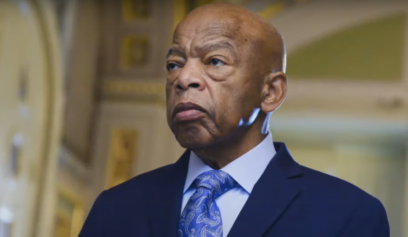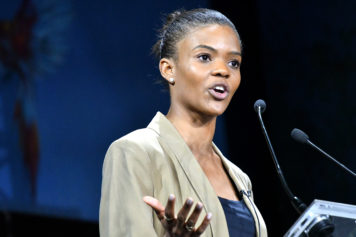
(Source: Flickr)
Founded in 1909, the NAACP is known as the nation’s oldest civil rights organization. Launched in part as a response to the lynching of Black people across the United States at the time, the NAACP held a key role as one of the preeminent players in the civil rights movement. Today the organization retains the legacy of a glorious past, yet struggles with defining its role, its mission, and its relevance in the twenty-first century. Underscoring the present internal crisis was the decision by the 64-member national board to oust its president, Cornell William Brooks, who had served in his role since May 2014.
The Council of Bishops of the African Methodist Episcopal Church recently wrote an open letter to the NAACP, providing words of support but also constructive criticism, tough love and heartfelt advice. Calling the NAACP “tired and unfocused,” the A.M.E. Church suggested they focus on organizational structure, mission and relevance, and inspiring young people and Black Lives Matter to join and get involved.
“What is the mission and vision for the NAACP today? If you get on a bus, you want to know where the bus is going. We don’t know where the NAACP is going,” the bishops wrote. “This is the reason many, particularly millennials are not getting on the bus called the NAACP.”
The letter also noted that while the NAACP boasts that it is the oldest civil rights organization in America, longevity by itself is not proof of relevance. “For the reality is that today the NAACP is smaller and less influential than it has ever been in its history as an organization,” the letter said. “Today the NAACP intimidates no one. To be perfectly honest, the same challenges that face the NAACP, face mainline faith denominations. We are old, and have not structured or positioned ourselves to meet the times in which our congregants live. The Black Church is seeking to confront its own challenges, and we call upon the NAACP to do the same.”
In the letter, the A.M.E. bishops noted the NAACP board is known more for its size than its effectiveness, and recommended that the organization pare down its board size by half. The A.M.E. Council also questioned the NAACP’s financial support, saying it depends on those who are hurting the Black community, such as alcohol, tobacco and “certain self interested union leadership” and others. “Do you rely on this support because our own people aren’t supportive financially? Could this nonsupport be because people interested in advancing the interests, access and opportunity of African Americans don’t believe the NAACP is relevant?”
“They’ve been dealing with the politics of personality, of youth, recapturing that kind of electricity they had in the ’60s. But times have changed, the context has changed,” said Trevor Coleman, a Washington speechwriter and communications strategist who served as director of communications for the Michigan Department of Civil Rights and has written for The Crisis, the magazine of the NAACP. Coleman, who covered the NAACP for years as a reporter for the Detroit News and Detroit Free Press and as a writer for Emerge magazine, stated that the younger generation looks elsewhere, such as Black Lives Matter and cultural figures for leadership rather than a bourgeois civil rights community that does not relate to them.
“Every 15 years or so the NAACP gets to this crucial point that becomes an inflection point in terms of where they are going to go. They have had problems since Ben Hooks retired in late ’80s or ’90s to bring on a widely admired charismatic leader because they’re invested in a charismatic form of leadership,” Coleman said. “Culturally, African-Americans, when it comes to civil rights organizations — particularly organizations such as the NAACP — we’ve been conditioned to feel emotionally connected to these organizations as much as we want them to be effective with their stated mission. In my view, it has put them in a no-win situation.”
Coleman discussed the circumstances surrounding past NAACP leadership, from Hooks, who was a minister grounded in the community but had middle class appeal, to Ben Chavis, who had hip-hop appeal and represented an experiment of sorts for the organization, and aroused suspicion for personal excesses and close ties to Minister Louis Farrakhan. Former Maryland Congressman Kweisi Mfume was president of the NAACP for some time, followed by Ben Jealous, who expanded the reach of the organization and formed more inclusive alliances with the environmental justice and LGBTQ communities and increased funding sources. “Ben Jealous ran into trouble with that unwieldy 64-member board. It was impossible, you can’t please them. You’ve got 64 different people with different agendas,” Coleman said.
Christina Smith, a student at West Chester University in Pennsylvania who has served as political action chair of the NAACP, agrees with the A.M.E. letter. Smith — who is a business management, political science and international business major — felt the NAACP must restructure and reorganize or risk becoming even more irrelevant than it has been in recent years. She also said the organization must reach out to the Black Lives Matter movement.
“Furthermore, the NAACP should restructure itself in a way that provides a foundation not only for [younger adults] to play an active role in addressing the issues that currently affect people of color particularly in the black community,” Smith said. “I’m 31 years old, and I have to say I don’t believe that the NAACP was ever formally introduced to me in a manner that led me to feel that it had the same mission of strength, unification, leadership, dedication, and resistance that it once had in the times of Dr. Martin Luther King Jr.”
Smith said the NAACP that she and her peers know is associated with the 1960s and civil rights. She believes those same leaders from the civil rights days remain at the forefront today. While she respects the leadership of the older generation, she does not believe they are the most effective leadership for today’s realities. “Unfortunately, the time for these gentlemen has been and continues to diminish; and there are very few young members that currently want to take their place at the head of the NAACP but would rather put their efforts into more modern resistance groups including Black Lives Matter,” Smith said.
Coleman agrees the NAACP must link with Black Lives Matter and groups that have their finger on the pulse of the community. He says the institutional knowledge and history of the institution is critical in light of the challenges facing the Black community. “The organization is invaluable. It would be a real loss if the NAACP were to go out of business. We have a full-scale onslaught, a five-alarm fire on voting rights. They are colluding with the Russians on the election. You have the White House forming what I call a voter suppression commission. There’s no move in Congress to suppress this,” he said, adding that some states are cooperating and providing voter information to the commission. “The commission is premised on a lie, an empirically proven lie. These states see it in their interest to suppress Black votes,” Coleman added.
The key to the NAACP addressing its challenges, he believes, is to change the dynamics of being a personality-institution. “The type of leadership they had in the ’60s with these highly charismatic leaders, that was like capturing lightning in a bottle,” he said. Many of the leaders were not charismatic, however, and benefited from their association with Martin Luther King Jr., who was actually not part of the NAACP and even received opposition from the organization, Coleman said. Civil rights work is mundane, and today the issues that get the most attention revolve around police-community relations, which Coleman believes is as important today as voting rights was back in the 1960s. “That’s one unifying issue among Black professionals, the middle class and people living in the ‘hood. Any Black man will tell you we have a problem with the police.”
“This is upsetting because during the civil rights movement it was the young people that were the heart and soul of the peaceful protest, boycotts, and lunch counter sit-ins,” Smith noted of the current challenges facing the NAACP. “It was their standing on the front line as they were beaten, had dogs sicked on them, and fire hoses turned on them, that was able to capture the attention of the American people, and, together with their senior counterparts, the NAACP youth was able to successfully challenge the oppression of African-Americans in America.” Ultimately, Smith thinks the NAACP, with its experienced leadership, could achieve successful resistance in coalition with Black Lives Matter/Say her Name and the Millennials’ innovative energy: “These unions are imperative to people of color’s abilities to combat the rising occurrences of brutality from the police; the attacks that we are currently under from our government — including members of Congress and the current president of the United States — and the institutionalized racism we continue to experience every day.”


